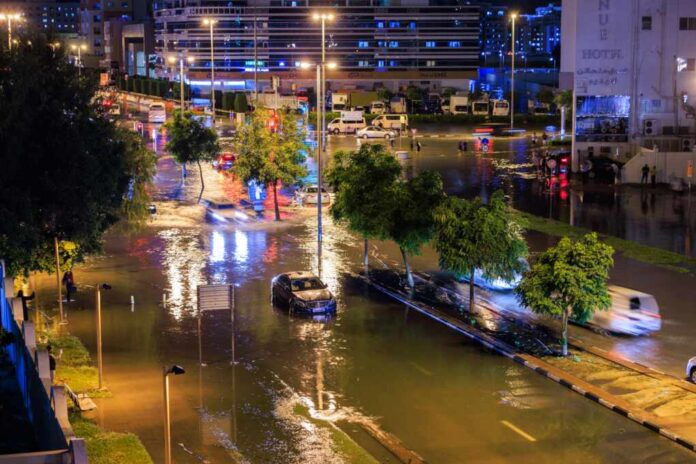
Dubai is known for a dry arid climate, so rainfall is an unusual event. It borders on historic when the area faces widespread flooding as it did in recent days, and double the annual precipitation in a matter of hours is cause for concern.
Many do not believe, however, that it was Mother Nature pouring precipitation down on the oil-rich nation. The geoengineering efforts of the United Arab Emirates are no secret, and its cloud seeding programs are believed by some to be responsible for the deadly deluge.
Dozens of people died in floods that swept across the normally dry landscape and caused extensive damage. The government is in denial of its responsibility, but its official story is doubted in many circles.
https://twitter.com/search?q=dubai%20seeding&src=typed_query
There are predictably some extremists who blame “climate change” for the destructive storm, but cloud seeding is more likely responsible for the downfall.
This process attempts to change the weather through the release of chemicals and particles using planes, cannons and ground technology. The hope is that introducing these elements into clouds will create artificial rainfall.
Global experts stand behind the validity of the procedure, and it has even been used in the U.S. Utah’s water supply reportedly increased by as much as 12% in 2018 due to cloud seeding.
The Daily Mail reported that UAE has worked for decades to perfect cloud seeding, though it is up in the air whether this week’s flooding is the result of a smashing success.
It is quite possible that there are risks involved in the widely practiced though poorly understood technique. The practice has been in existence for several decades and began with experimentation by General Electric researchers.
Water vapor does not form crystals on its own in clouds. It needs a tiny object such as dust particles or even bacteria to condense around, and the resulting crystals grow so large they fall from the clouds to Earth.
Depending on the temperature, they form rain or snow.
Cloud seeding injects chemicals like sodium or silver iodide to push the precipitation process along. They may be launched from the ground in missiles or shells, dropped by airplanes or simply released from the Earth’s surface.
The People’s Republic of China is currently at the forefront of cloud seeding practices. The communist nation used the process extensively in reverse in 2008 to ensure rain would not fall on the Beijing Olympics.
































